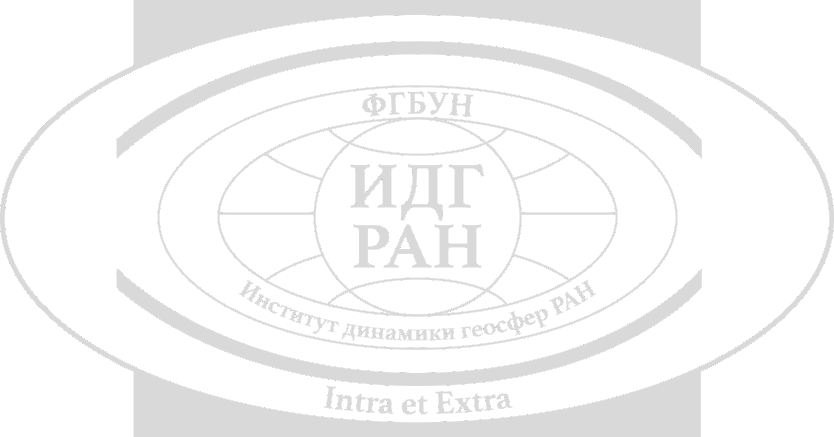Geomechanics of faults in the Earth's crust - from regional scale to micro-cracks
The project is aimed at solving a fundamental scientific problem - development of mechanics of deformation processes in fault zones with the goal of constructing a calculation model resting on physical principles and appropriate for prognosis functions.
Despite the fact that there are tremendous differences in composition and structure, mechanical and mineralogical properties, P-T conditions of different discontinuities in the Earth's crust (from cracks to planetary faults), the regularities of shear deformation of all these structures are determined by the laws of frictional interaction. Thus, the scientific significance of the task to adequately describe friction in geosystems of different hierarchical levels, embracing many physical and chemical processes, is beyond doubt.
Despite a great number of publications dedicated to different aspects of the problem of evolution of dynamic deformations in the zones of tectonic faults the process of nucleation and termination of natural and strong anthropogenic earthquakes remains poorly understood. Entirely different deformation modes (from aseismic creep to earthquakes and rock bursts) are often reproduced at fault zones very similar at the first glance in structure and stress conditions. Understanding mechanics of these processes can help to look into some determining details of nucleation of both natural and anthropogenic events.
The main tasks of the project are as follows:
- analyzing spatial and temporal regularities of localization of deformations of different hierarchical levels in the Earth's crust;
- developing a complex model of nucleation and evolution of dynamic instability at the sections of localization of deformations in the Earth's crust resting on the results of performed investigations.
The scale of the problem being solved include many local tasks: from studying interactions of local contacts between grains of fault filler to analyzing the conformity of regularities forecasted by the model being developed to the observed effects of localization of deformations in large fault zones and to numerical simulations of different sliding processes in the Earth's crust. The project rests on a new laboratory setup constructed in IDG RAS in 2020. It is suited for investigating the processes of sliding along an existing fault about 100 cm long in the range of normal stresses up to 20 MPa. There are no such setups in Russia and there are only several analogues in the world. The size of the setup will allow to excite vibrations in rock blocks and to use them both for diagnosing the contact zone and as a trigger.
An essential difference of the project being proposed from investigations being performed by other groups is the complex approach. Investigations of evolution of the process of sliding along a fault with a filler containing materials with different physical, mechanical and frictional properties (including materials with strengthening and weakening properties in dynamic shear), investigations of the effects of external disturbances on the evolution of sliding regime, control of fault stiffness during preparation of a dynamic failure are planned in the frames of one and the same project. Besides that, unlike other existing setups, we plan to study nucleation and propagation of rupture in a model composed of several blocks.
Field investigations in the frames of the project being proposed are planned to be performed at the North-Eastern Fault of the Korobkovskoe deposit of the Kursk Magnetic Anomaly (KMA). Along with structural investigations the reaction of the fault zone to the action of technological explosions will be studied.
Numerical simulations of some stages of the sliding process in the frames of the project will be performed to detect links between different physical mechanisms and to assess their relative importance. Codes resting on the Lagrange method "Tensor" (modeling the processes of nucleation, propagation and termination of different regimes of rupturing) will be used in numerical simulations, as well as the code ODYN supplemented with a module that will allow to set a spatially heterogeneous distribution of frictional properties along the fault.
Different problems analogous to actual conditions of laboratory experiments will be simulated numerically, which will allow to interpret the results of experiments and extrapolate them to more complex natural objects.
In order to test the applicability of the approaches of the project to several aspects of deformation processes in the largest fault zones in the Earth the available GPS data and the parameters of ruptures in fault zones will be used.
Integration of the data of field investigations of faults, results of computer modeling and laboratory experiments at a setup of a world class will provide a new level of understanding large-scale geomechanical processes.
The new elements (in comparison to our own previous studies) are using a new experimental setup, new statement of numerical simulations, and the intention to interpret the results of observations over induced seismicity at KMA resting on methods of data processing developed in the course of the RSF project #20-77-10087 supervised by A.A.Ostapchuk.

